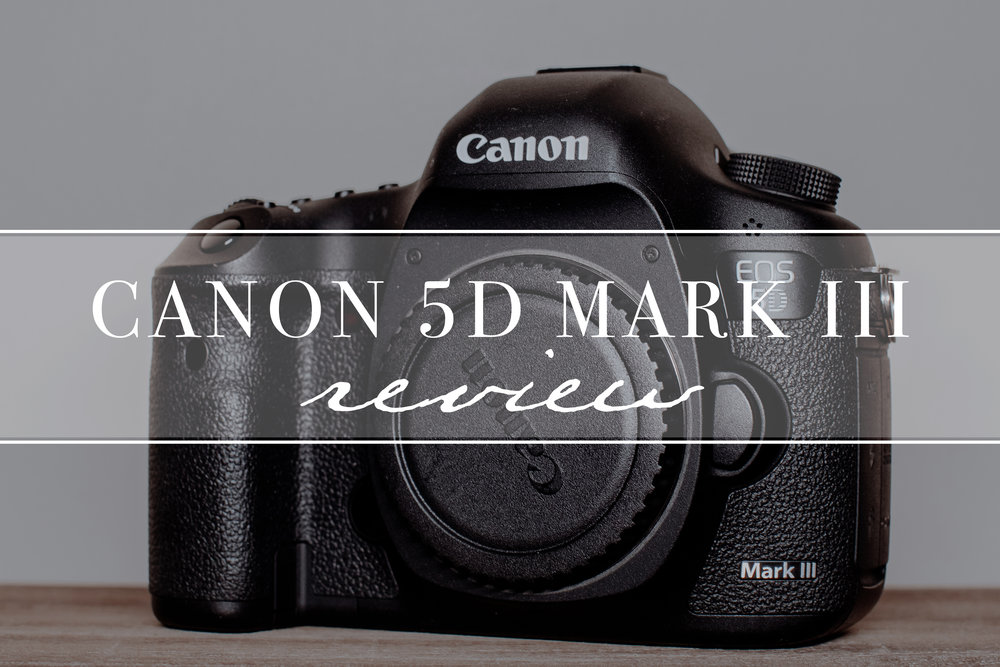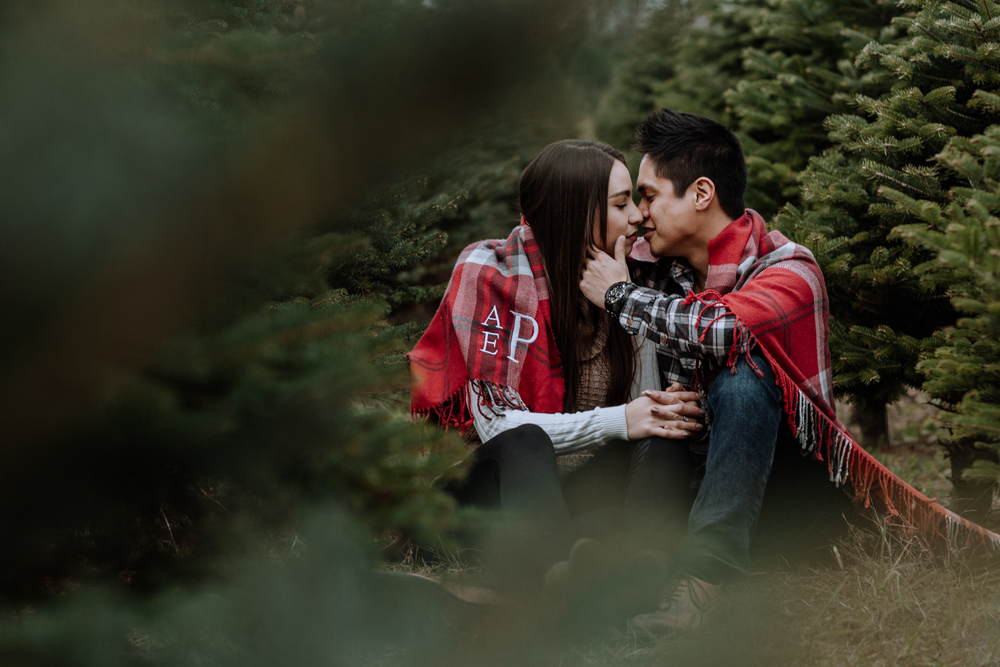
The Canon 5D Mark III was originally released in March 2012, and since then has become a staple for professional photographers everywhere. It was our first professional grade camera body, which we purchased to replace our Canon Rebel series bodies.
At the time, the 5D Mark III served as a substantial step forward from the Mark II as it offered increased resolution, increased image quality, an improved auto-focus system, and so on. That is not to say that the 5D Mark II was bad by any stretch, by the technological changes that occur within the 4 years of development before bringing the updated version to market are significant – if maybe not entirely revolutionary.
As we chat with other wedding and portrait photographers in the industry today, those that use Canon brand equipment will often make note that their primary body is the Canon 5D Mark III. Right now, in the time from 2017 – 2018, this camera body is in a unique position where the value it offers is increased as it’s actual monetary cost drops more and more. Initially retailing for $3,500, you can find new Canon 5D Mark III bodies on sale for around $2,000. While certainly not “inexpensive” by any means, as a professional piece of equipment that is still commonly used and a real mainstay in the photography industry, $2k for the value offered seems like a steal – even further if, like us, you are jumping from starter cameras. This is further noted when checking out same cost packages that include things like memory cards, camera backpacks, monopods, lighting equipment, and more.
Now, we are going to break our thoughts on the Canon 5D Mark III into two parts: the 1st discussing how the Mark III improved on the Mark II camera body, and the 2nd providing more detail about how we utilize the 5D Mark III in our standard workflow since starting to shoot professionally in 2016 to the current day with this body.
How the canon 5d mark iii improves on the mark ii’s legacy
As the years go by, every piece of camera equipment that comes out sets the goal of improving on it’s predecessor. The Canon 5D Mark III’s improvements over the Mark II are noticeable, and while to some when it originally released, not significant enough to justify another huge purchase – especially if you were already an owner of the Mark II – today the value is made more apparent as a result of the lower price tag and evidence of this camera bodies ability to hold up for a long time after purchase. We have been shooting with ours for 2+ years now, and there is no signs of wear or slowing down.
Thanks for some excellent Canon 5D Mark II vs. Canon 5D Mark III resources, it is easy to quickly reference where the Mark III makes significant technical changes. The advantages it offers include:
-
Increased ISO range to 25,600 (from 6,400) enabling more low light photography, and allowing images outputted at higher ISO’s to still be usable with reductions in noise
-
Increased auto-focus performance as a result of cross-type AF points and increased number of AF points
-
Faster shutter speeds allowing you to take pictures faster (especially useful for wedding and event photography)
-
Dual card slots – allows you to insert multiple SD cards for capturing more images without changing out, and also allows you to write images to 2 at once
-
Faster RAW shooting in burst mode
There are certainly other changes that could be noted, particularly to the video capabilities of the Mark III, but as we focus primarily on photography this is not of significant use for our shooting purposes. Still, enhancements to video is valuable if you ever dabble in this for personal or professional use cases.
As is evident from the consolidated list above, there are significant changes from the Mark II to the Mark III, though for most the list may feel a little underwhelming. In this current day and age, it is not likely that you will be considering a purchase of the Mark II in any form (unless you are on a steep budget) – though there still exist photographers who swear by that camera body to this day. Fundamentally, your camera body provides a foundation on which you build your photography style – the Mark III provides a better foundation (technically speaking) than the Mark II, but still both can be used to great effect in capable hands.
Easily, the most attractive aspects of the Mark III for us as wedding photographers are the following: better image quality, ability to shoot in lower light conditions by bumping ISO further (with less impact on image quality from noise), better focus performance (absolutely essential for a professional photographer), dual card slots (we use this commonly when second shooting weddings so we can use another photographers SD card and give to them after the wedding), and quick shutter speeds allowing us to capture all the candid, in-the-moment shots we need.
How we use the canon 5d mark iii in our pro photo workflow
If you are not too familiar with our photography portfolio, I would suggest you start by checking out some of our story blog posts to see examples of our photos in the context of the many sessions and weddings we shoot throughout the year. As will become clear, we primarily shoot engagement sessions and weddings for our loving couples, with occasional family, boudoir, and portrait photos mixed in as they are requested. Wedding days are the most significantly important to have the right gear on hand, as things can get out of hand without the right equipment for every constantly changing scenario that can pop up within a single wedding day, and from wedding to wedding. We compiled a lot of our shooting experiences in the article 101 Digital Photography Tips if you need more general advice.
Before opening our own photography business, we made it a point to research commonly used and reliable camera equipment. The Canon 5D Mark III is a common favorite for many wedding photographers around the world, and as a result we found it necessary to own one (or a camera body on a similar level from another camera-maker) in order to be competitive by offering clients similar or better quality than other photographers near us. We can’t stress enough the value to photographers the better low light performance is when in a pinch, especially when shooting with flash is not an option such as in a church or cathedral as these are often no-flash environments during a wedding ceremony.
Our current kit consists of two 5D Mark III’s, and two 5D Mark IV’s. Having backup bodies on hand is essential for a professional because, while there is never a good time for equipment to stop working, during a high stress event like a wedding if something unfortunate was to happen (say a technical glitch or dropping the camera!), being able to swap it out and finish your day is essential. For a photographer who may already have the most up-to-date Mark IV, considering the more inexpensive Mark III as a backup also seems like a reasonable thing to do.
Lastly, at its core, a camera body is only as good as the lenses and other equipment that is utilized with it, as well as the skill (both technically and artistically speaking) of the person taking the pictures. The Canon 5D Mark III has few significant limitations, and offers a lot of breathing room for a photographer to get the most out of their images by utilizing it. We cannot complain with any of the quality images we have produced, and even how the drastic change from the Canon Rebel to the Mark III has improved our photographs as a result of better performance in imperfect lighting situations.
a note on the canon 5d mark IV vs. the 5d mark iii
While the core of this article has been about discussing the value of the 5D Mark III, given that we are in 2018 it is difficult to ignore talking a little more about the Canon 5D Mark IV – especially considering we have used this camera body for over a year and have a reasonable understanding of the differences between the two models. We are not going into great depth here (if you are looking for more info, please read our article Canon 5D Mark IV Review Through the Eyes of Two Wedding Photographers), but can simply: the Canon 5D Mark IV is generally better (as you should expect), but the Canon 5D Mark III provides excellent value for the cost and quality. Today, we still pay premium prices for the Mark IV – though prices have reduced since we adopted this ourselves at the $4,000 price point. Budget conscious photographers, especially those with a minimal amount of money to invest into their photography business, will likely be attracted to the Mark III.
The Canon 5D Mark III is an excellent camera body for it’s price. It offers substantial value, and at lower costs makes it a more attractive upgrade to new professionals looking to have great camera gear.
If you are interested in learning more and purchasing one yourself, consider doing so through our Amazon links. Any purchases made provides H&A with a small commission that enables us to reinvest in our business and continue providing valuable content like this in the future.

